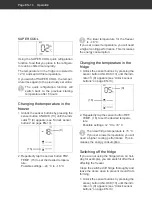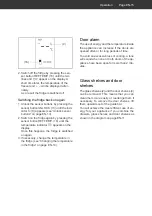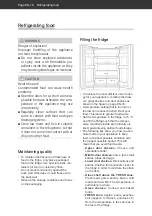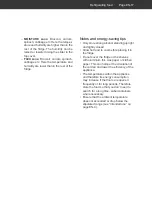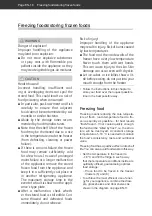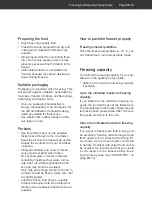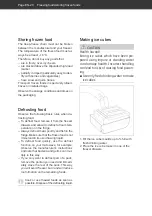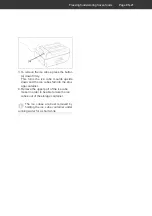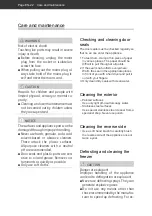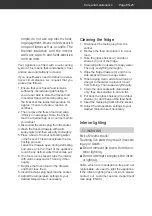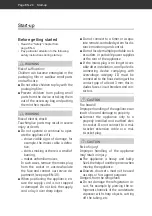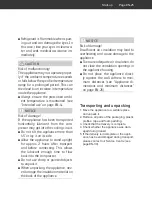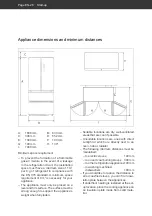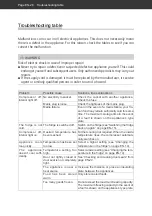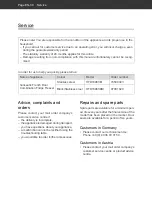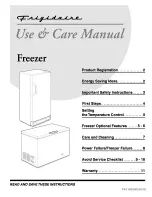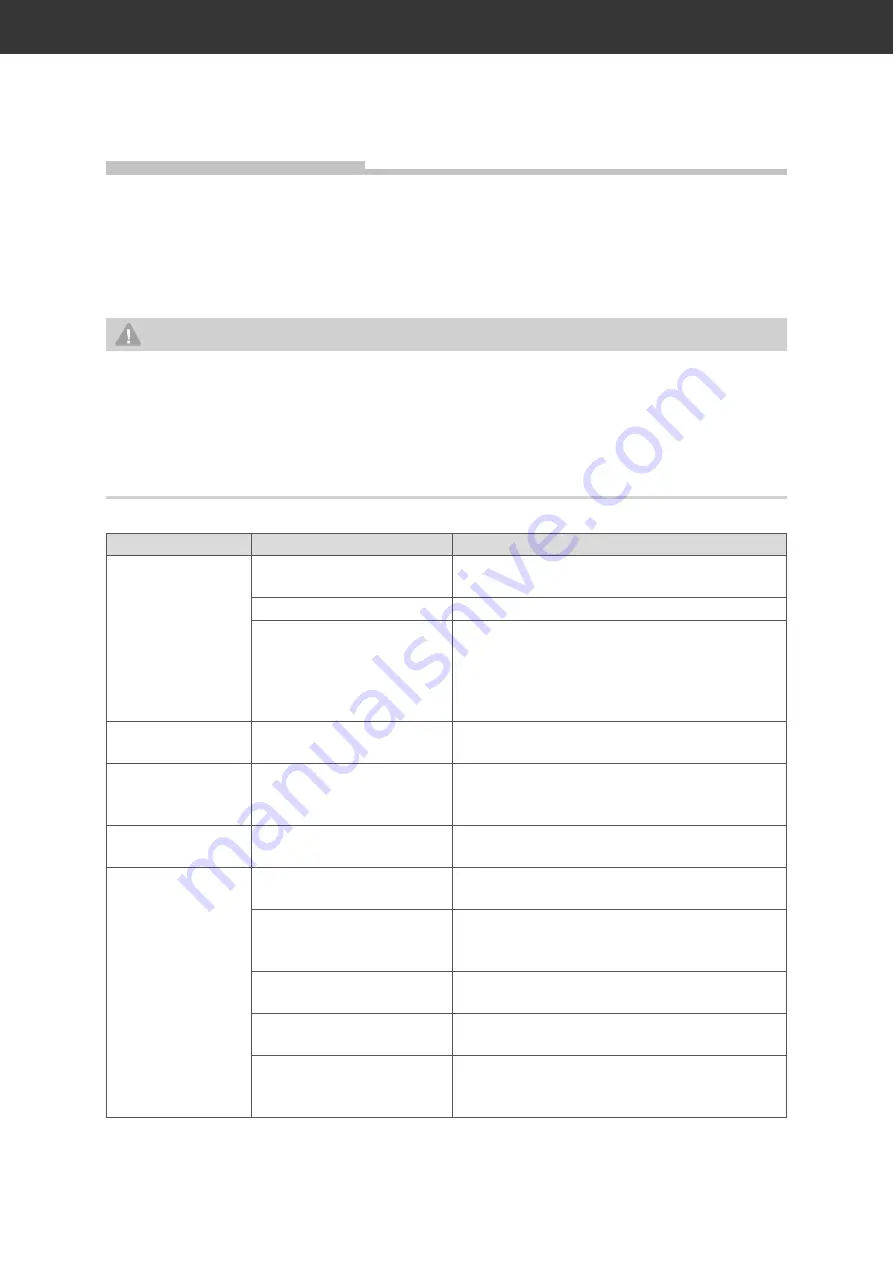
Troubleshooting table
Malfunctions can occur in all electrical appliances. This does not necessarily mean
there is a defect in the appliance. For this reason, check the tables to see if you can
correct the malfunction.
WARNING
Risk of electric shock in case of improper repair!
■
Never try to repair a defective or suspected defective appliance yourself. This could
endanger yourself and subsequent users. Only authorised specialists may carry out
repairs.
■
If the supply cord is damaged, it must be replaced by the manufacturer, its service
agent or similarly qualified persons in order to avoid a hazard.
Problem
Possible cause
Solutions, tips, explanations
Compressor off,
interior light off.
No electricity to socket.
Check the socket with another appliance.
Check the fuse.
Mains plug is loose.
Check the tightness of the mains plug.
Mains failure.
Even in the event of a mains failure, your fro-
zen food may remain sufficiently cold for some
time. The maximum storage time in the event
of a fault is shown on the appliance’s type
plate.
The fridge is not
cold.
The fridge is switched off.
Switch on the fridge (see “Switching the fridge
back on again” on page EN-15).
Compressor off,
interior light on.
Desired temperature has
been reached.
Further cooling not required. When the inside
temperature rises, the compressor automati-
cally switches on.
Appliance cools
too quickly.
Temperature has been set
too low.
Select a higher setting (see “Changing the
temperature in the fridge” on page EN-14).
The appliance
doesn’t cool suffi-
ciently.
Temperature setting too
high.
Select a lower setting (see “Changing the tem-
perature in the fridge” on page EN-14).
Door not tightly closed or
door seal is not completely
tight.
See “Checking and cleaning door seals” from
page EN-22.
The appliance is near a
heat source.
Increase the distance or place an insulating
plate between the appliances.
Food has been stored
warm.
Only store cooled foods.
Too many goods frozen.
Do not exceed the maximum freezing capacity.
The maximum freezing capacity in the event of
a fault is shown on the appliance’s type plate.
Troubleshooting table
Page EN-28

